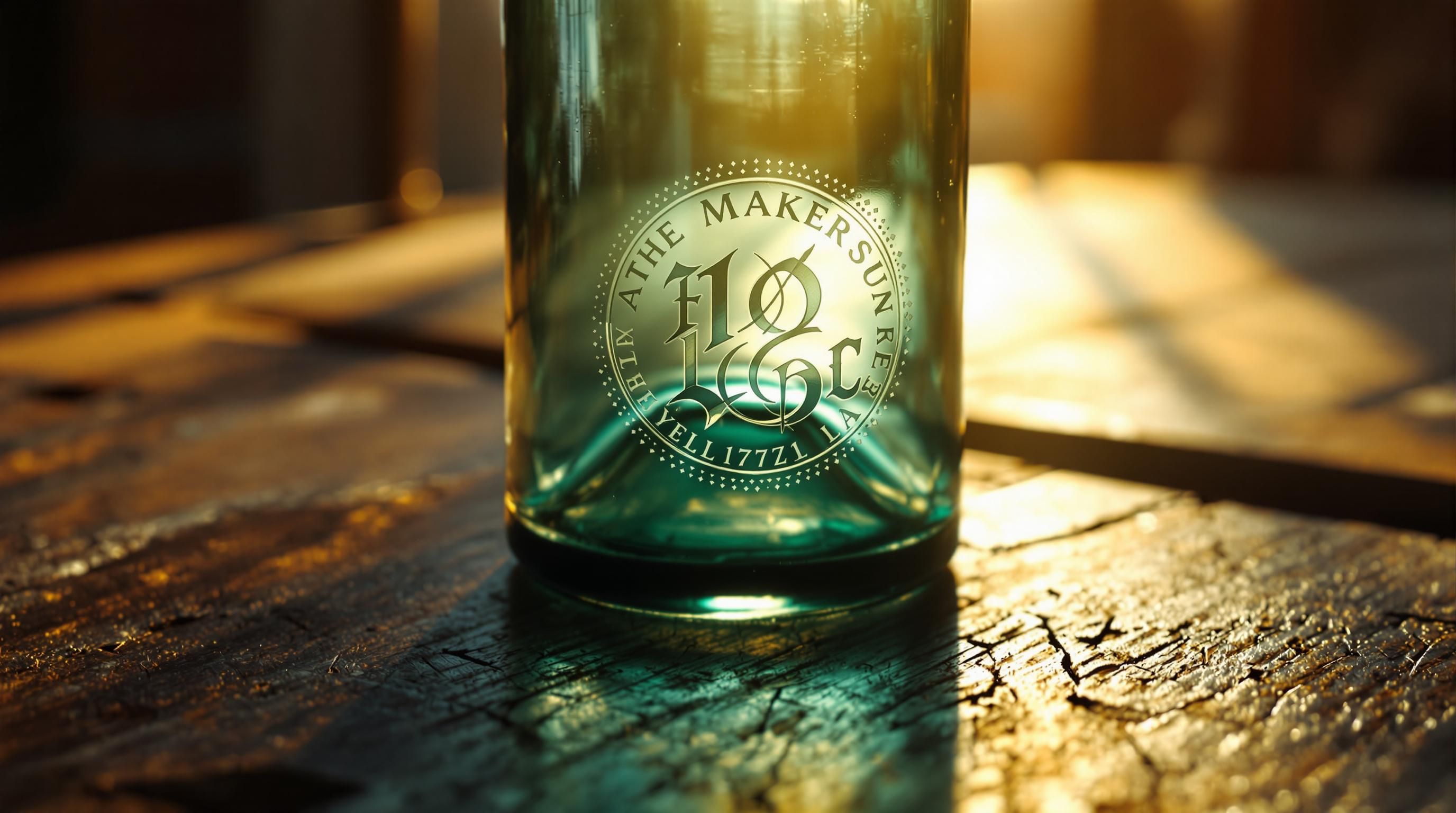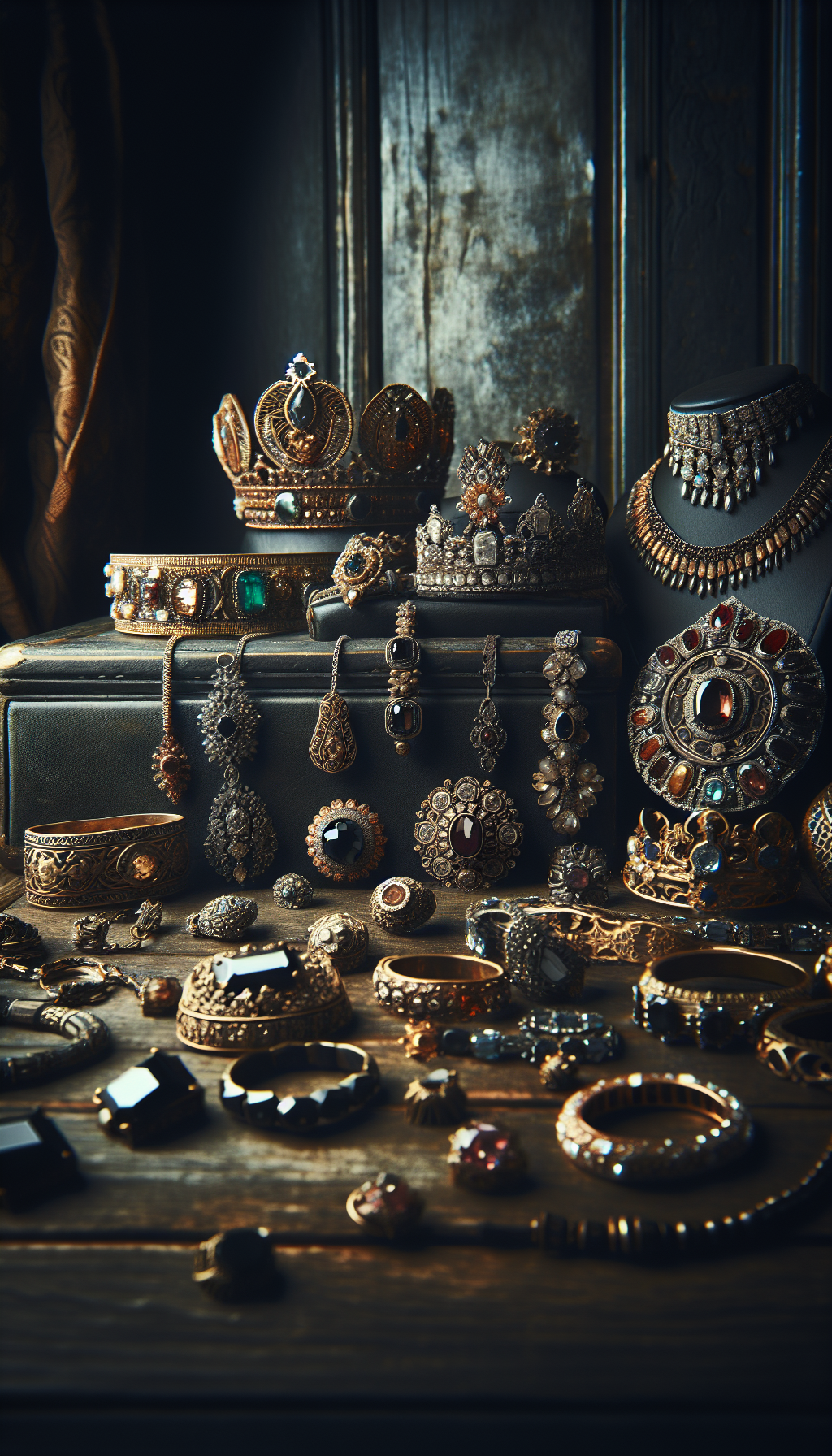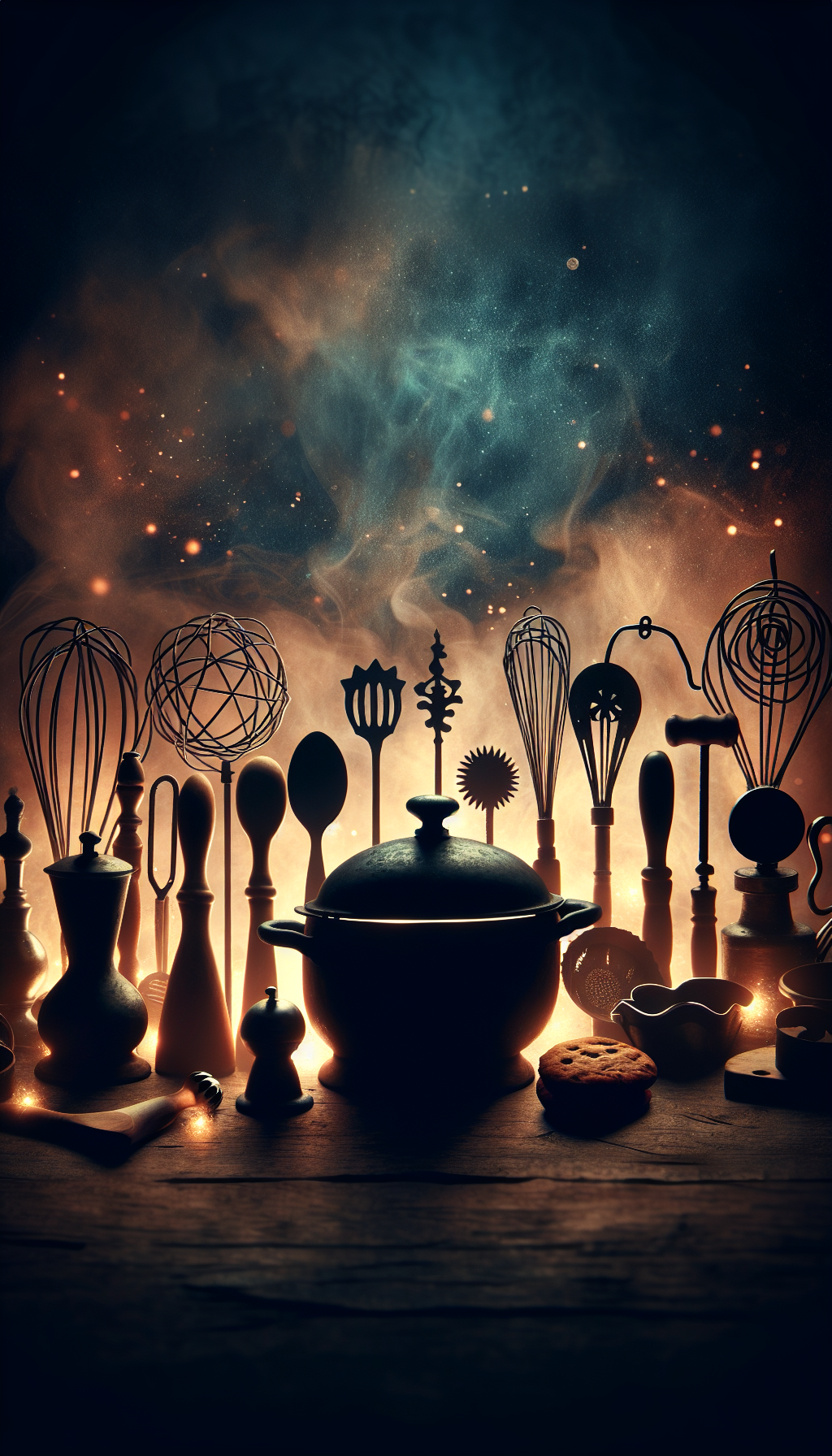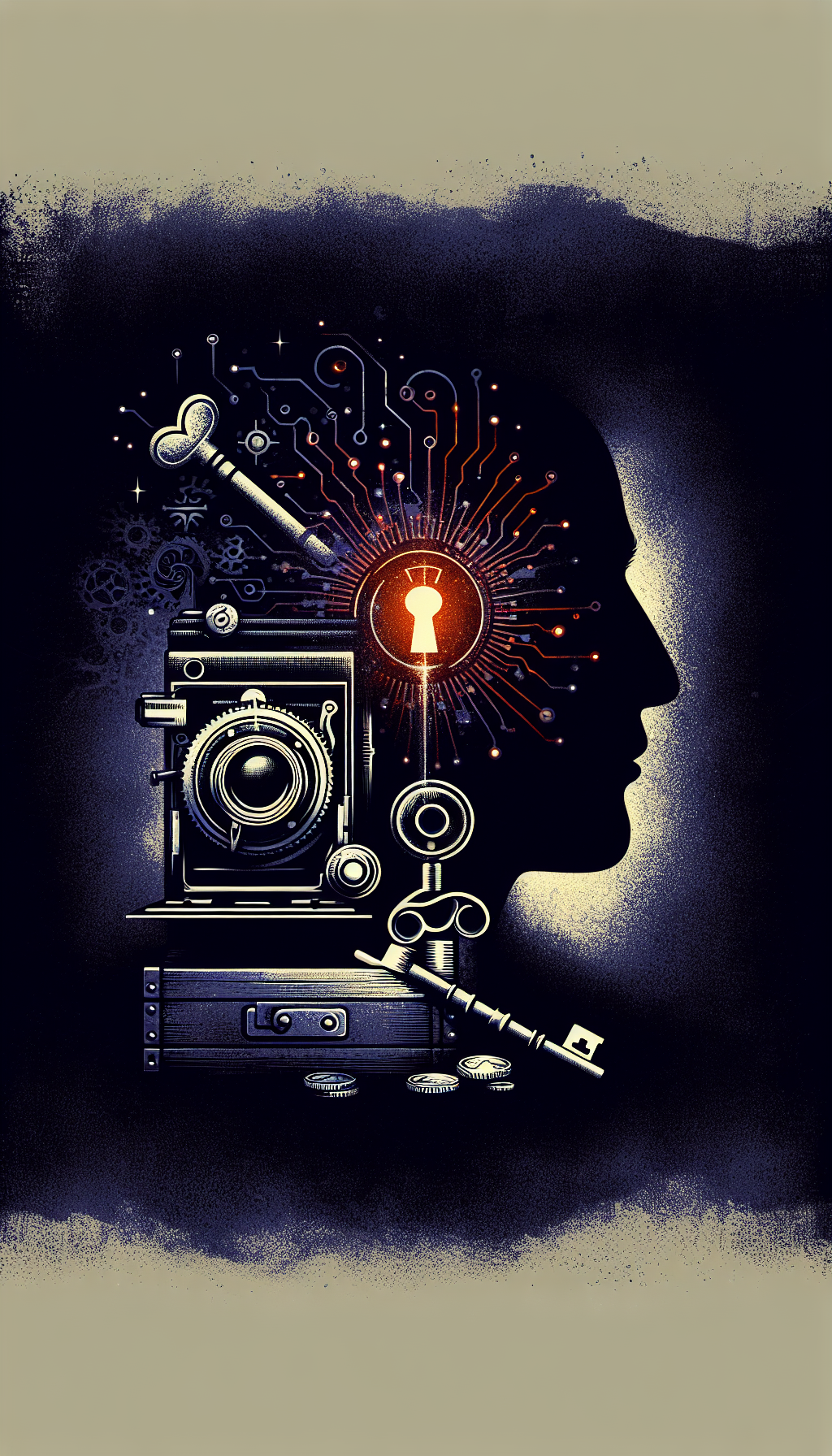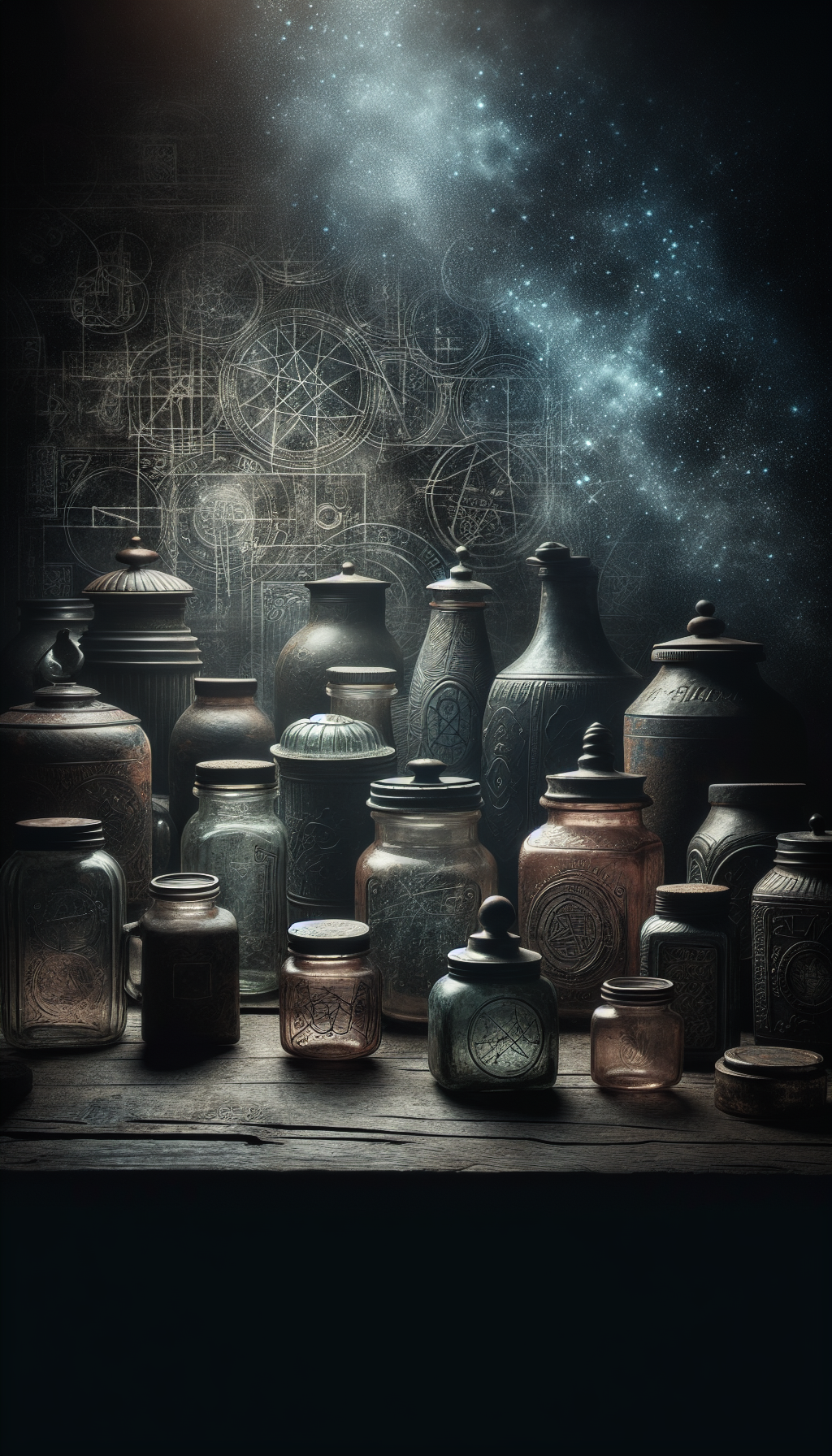Are you curious about that old glass bottle you found in your grandmother’s attic or while digging in your backyard? Antique bottles can tell fascinating stories about our past and sometimes hold significant value to collectors. This comprehensive guide will help you identify, date, and determine the value of your historic glass bottles.
Why Identify Old Bottles?
Antique Bottle Market Statistics
Most collectible antique bottles date from this 100-year period
Exceptional examples can fetch thousands at auction
From medicine and spirits to food and cosmetics
Essential Tools for Bottle Identification
Before diving into the details, gather these helpful tools:
- Magnifying glass (to examine small markings)
- Good lighting source
- Digital camera (for documentation)
- Ruler or calipers (for measurements)
- Reference books or reliable websites
- Notebook for recording observations
Key Identification Features
Examining Bottle Bases
The bottom of an antique bottle often contains valuable identification information:

Pontil Marks
One of the most important indicators of an old bottle is the presence of a pontil mark on the base.
Types of Pontil Marks
Different pontil marks indicate various production periods and methods
- Open Pontil Scar (1800-1860): Rough circular scar with sharp edges
- Iron Pontil Mark (1845-1870): Reddish/graphite residue in circular form
- Sand Pontil (1850-1870): Granular, sandpaper-like texture
- Smooth Base (post-1870): Absence of pontil mark indicates later production
Manufacturer’s Marks
Embossed symbols, initials, or logos on bottle bases often identify the glass manufacturer. These marks can be crucial for dating and authentication.
According to Glass Bottle Marks, some common marks include:
- “I” inside a diamond: Illinois Glass Company (1873-1929)
- “B” in a circle: Brockway Glass Company (after 1925)
- “O-I” symbol: Owens-Illinois Glass Company (after 1929)
- “AB” connected: American Bottle Company (1905-1929)
Mold Seams and Production Methods
The presence and position of mold seams provide excellent dating clues:
Bottle Manufacturing Evolution
- Pre-1860
Free-Blown Bottles
No mold seams; irregular shapes and thicknesses. Often has a pontil mark on the base. - 1860-1880
Early Mold-Blown Bottles
Visible side seams that stop at the shoulder or lower neck. - 1880-1910
Semi-Automatic Production
Seams extend up to but not onto the lip; lip applied separately. - After 1910
Automatic Bottle Machine (ABM)
Seams run completely from base to top of the lip; more uniform appearance.
As noted by the Society for Historical Archaeology, the Automatic Bottle Machine (ABM) revolutionized bottle production around 1910, making this a crucial dating boundary for collectors.
Bottle Lips and Finishes
The design of a bottle’s lip or “finish” provides important dating information:
- Applied lips (pre-1910): Added separately after the bottle was blown
- Tooled lips (1870-1910): Applied then smoothed with tools
- Machine-made (post-1910): Formed as part of the bottle in one process
Bottle Color Identification
Color Dating Guide
How bottle colors can help determine age
</tbody>
</table>
The Historic Bottle Website explains that color variations were partly due to functional needs (darker glass protected contents from light) and partly due to available materials and manufacturing techniques.
Bottle Shapes and Types
Bottle shapes were typically designed for specific purposes. According to the SHA Bottle Typing Page, these are some common categories:
Bottle Categories by Shape
- Medicine Bottles: Rectangular or oval; often embossed with product claims
- Whiskey/Spirits Bottles: Flask shapes, cylinders, or figural designs
- Soda/Mineral Water: Round with rounded or blob-top closures
- Ink Bottles: Small with wide bases for stability
- Poison Bottles: Often feature textured patterns, unusual colors, or skull designs
- Food Bottles: Wide-mouth designs for easy access to contents
- Beer Bottles: Brown glass with crown cap finishes after 1892
- Milk Bottles: Round with wide mouths and distinctive collars (mostly 1880s-1950s)
Notable Antique Bottle Auction Sales
Recent sales of rare and collectible bottles
| Category | Price | Notes |
|---|---|---|
| Aqua/Light Blue-Green | Common 1800s-early 1900s | Natural glass color with iron impurities |
| True Black Glass | 1815-1885 | Often British ale, wine, or mineral water bottles |
| Amethyst/Purple | 1880-1925 | Originally clear glass that turns purple from sun exposure |
| Cobalt Blue | Various Periods | Common for medicines, poisons, and cosmetics |
| Emerald Green | Mid-1800s to 1900s | Often soda or mineral water bottles |
| Milk Glass | 1890-1950s | Popular for cosmetics and ointments |
</tbody>
</table>
Embossing and Labeling
Embossed text and original labels provide direct information about a bottle’s contents, manufacturer, and origin. Look for:
- City names and locations
- Product names and slogans
- Patent dates or registration numbers
- Manufacturer names
- Volume or capacity indicators
According to Antique Trader, specific inscriptions like “Federal Law Forbids Sale or Reuse of This Bottle” indicate liquor bottles made between 1933 (end of Prohibition) and 1964.
Valuing Antique Bottles
Key Value Factors
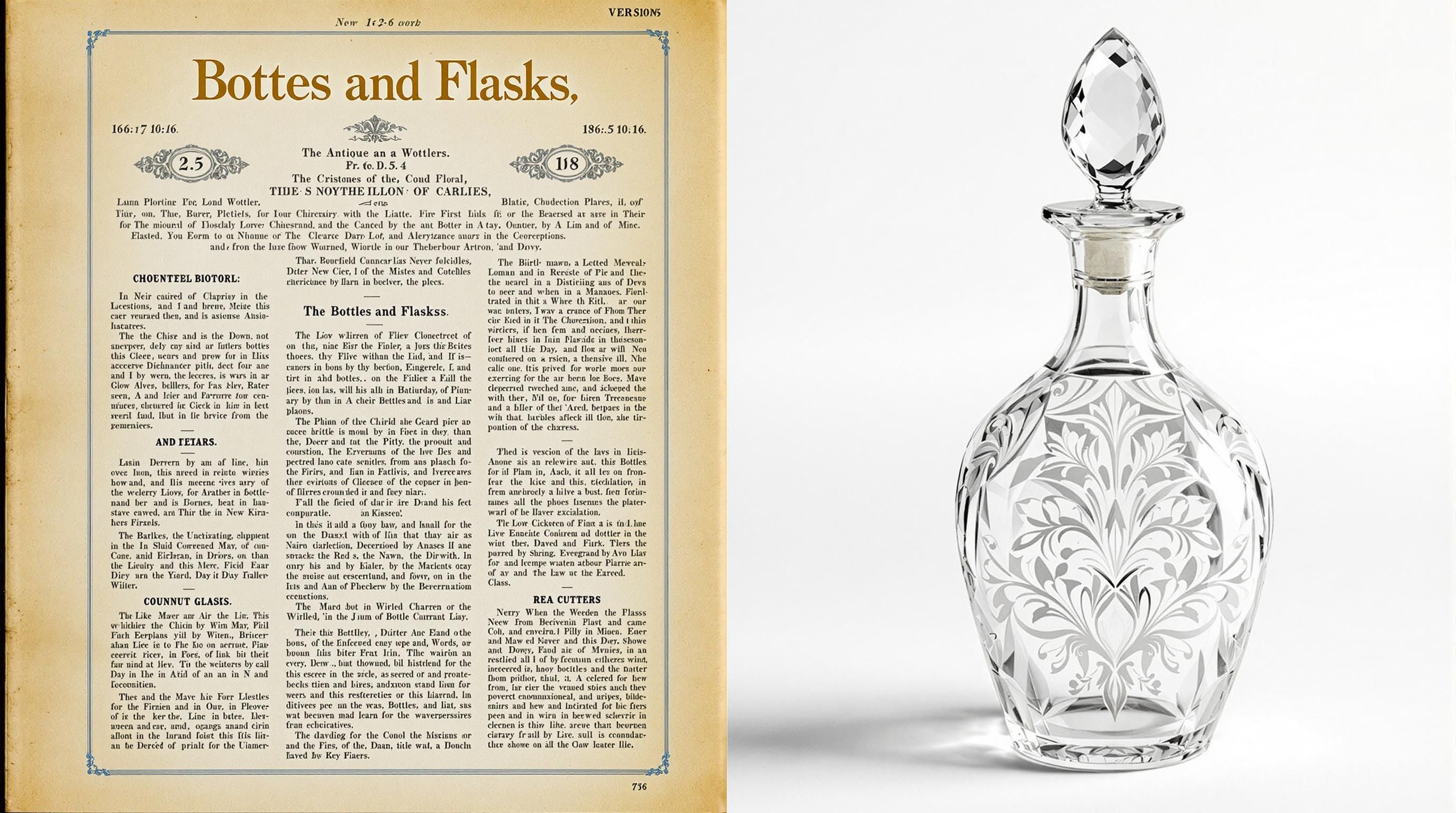
According to bottle collecting experts, these factors most significantly impact bottle values:
- Rarity: Uncommon bottles from limited production runs command higher prices
- Age: Generally, older bottles (pre-1900) are more valuable
- Condition: Cracks, chips, and stains significantly reduce value
- Color: Unusual colors (cobalt blue, amber, true red) typically bring premiums
- Historical Significance: Bottles connected to important events or people
- Aesthetics: Attractive designs, embossing, and decoration
- Regional Interest: Local bottles often appeal to collectors from that area
Bottle Condition Assessment
Check applicable items to evaluate condition
- No chips, cracks or flakes
- Original closure present
- Clear embossing with no wear
- Original label intact
- No staining or interior residue
- No scratches or case wear
- Consistent color without fading
Price Range Examples
According to collector guides and recent auction results, here are approximate value ranges for some common bottle types:
Antique Bottle Value Ranges
Average market values by category (as of 2023)
| Item | Price | Date | Auction House |
|---|---|---|---|
| Drake's Plantation Bitters (figural cabin) | $4,200 | January 2023 | Glass Works Auctions |
| Eagle Flask (cobalt blue) | $7,500 | March 2022 | American Bottle Auctions |
| Casper's Whiskey (amber, western) | $3,600 | November 2022 | Jeff Wichmann Auctions |
| Antique Poison Bottle (cobalt with embossed skull) | $2,800 | February 2023 | eBay |
</tbody>
</table>
For detailed price guides, the Antique Trader Bottles Identification & Price Guide offers comprehensive listings with over 5,000 bottle values.
Digital Solutions for Bottle Identification
Bottle Identification Apps
Based on related searches for “Old bottle identifier app” and “Bottle identifier app,” collectors are increasingly turning to digital solutions:
- Mobile Apps: Several smartphone applications allow you to photograph a bottle and receive identification suggestions
- Online Databases: Websites with searchable directories of bottle marks and features
- Collector Forums: Communities where experts help identify unusual specimens
- Visual Recognition Tools: AI-powered image recognition for bottle identification
While technology can help, most serious collectors still recommend learning the fundamental identification techniques outlined in this guide for accurate assessments.
External Resources for Bottle Identification
Historic Glass Bottle Identification & Information Website
Comprehensive guide by the Society for Historical Archaeology with detailed information on dating, typing, and identifying historic bottles.
Glass Bottle Marks
Extensive database of manufacturer marks found on glass bottles and jars, helping with identification and dating.
Antique Trader Bottle Price Guide
Comprehensive price guide featuring over 5,000 bottle listings with 700+ color photographs.
Reddit Bottle Digging Community
Active community of bottle diggers and collectors who share finds and help with identifications.
How to Identify Historic Artifact Hacks: Historic Glass Bottles
Informative video from Dr. Fred Sutherland on bottle identification techniques and historical context.
Bottle Bases Page
Detailed information about bottle bases and the crucial identification marks they contain.
Where to Research Further
Recommended Books
- Antique Trader Bottles Identification & Price Guide - This comprehensive guide features over 5,000 listings and 700 photographs
- Kovels’ Bottle Price List - Updated regularly with current market values
- The Bottle Book: A Comprehensive Guide to Historic, Embossed Medicine Bottles by Richard E. Fike
- Collecting Applied Color Label Soda Bottles by Rick Sweeney
- American Bottles and Flasks and Their Ancestry by Helen McKearin and Kenneth Wilson
Bottle Collecting Organizations
- Federation of Historical Bottle Collectors - Hosts annual shows and publishes educational materials
- National Bottle Museum in Ballston Spa, NY - Offers research facilities and educational programs
- Regional bottle collecting clubs - Many areas have local organizations that share knowledge and host shows
Common Questions About Old Bottle Identification
How do I identify old bottles?
To identify old bottles, examine these key features:
- Base markings - Look for pontil marks or manufacturer logos
- Mold seams - Their position indicates production method and age
- Lip finish - Applied, tooled, or machine-made
- Color - Some colors are associated with specific time periods
- Embossing - Text and designs can identify manufacturer and contents
- Shape - Indicates the bottle’s original purpose
Resources like the Historic Bottle Website provide detailed identification guides with visual references.
How do you date a bottle?
Dating a bottle involves examining several manufacturing characteristics:
- Look for date codes molded into the glass (often on the bottom)
- Examine mold seams - bottles with seams extending to the top of the lip are typically post-1910
- Check for pontil marks on the base (generally pre-1870)
- Identify the manufacturing technique (free-blown, mold-blown, machine-made)
- Note any embossed patent dates or company information
Most bottle manufacturers after 1900 included two-digit date codes on the bottom. As mentioned on WhiskeyID, these often represent the last two digits of the production year.
How to tell if a bottle is worth money?
To determine if a bottle has significant value:
- Assess its rarity - common bottles have limited value
- Examine condition - chips, cracks, and staining reduce value significantly
- Consider color - unusual colors often command premiums
- Research similar examples through price guides or auction results
- Consult with knowledgeable dealers or appraisers for professional opinions
Be realistic about condition - as noted in collecting guides, condition can be the single biggest factor affecting value.
How can I tell how old my liquor bottle is?
For liquor bottles specifically:
- Check for tax stamps - different designs indicate specific periods
- Look for embossed statements like “Federal Law Forbids Sale or Reuse” (1933-1964)
- Examine the glass - hand-blown vs. machine-made
- Look for two-digit date codes on the bottle bottom
- Research the distillery or brand history
As mentioned by Bourbon Sippers, most glass liquor bottles after 1900 have two-digit date codes on the bottom, typically in the lower right corner.
Is there an app that can identify old bottles?
Several apps and online tools can help identify old bottles:
- Google Lens - Can identify some common bottle types based on photos
- Specialized bottle collector forums - Allow you to upload images for expert opinions
- Online databases like Glass Bottle Marks
However, no app currently provides comprehensive old bottle identification with high accuracy. The most reliable method remains consulting reference guides and expert collectors.
What are the most valuable types of antique bottles?
The most valuable antique bottles typically include:
- Colored historical flasks (especially in rare colors)
- Figural bitters bottles (like cabin-shaped Drakes Plantation Bitters)
- Rare whiskey bottles from defunct distilleries
- Early embossed medicine bottles with unusual claims
- Pre-Civil War bottles in excellent condition
- Bottles with historical significance or from famous makers
Exceptional examples in these categories can sell for thousands of dollars at specialized auctions.
How do I clean old bottles without damaging them?
Follow these safe cleaning methods for antique bottles:
- For light dirt: Warm water with mild dish soap and bottle brushes
- For mineral deposits: Soak in a solution of distilled water and vinegar
- For stubborn residue: Use denture cleaning tablets
- NEVER use: Harsh chemicals, abrasive brushes, or dishwashers
If a bottle has its original label, avoid immersing it in water. Instead, clean the glass portions carefully with a damp cloth.
What do numbers on the bottom of old bottles mean?
Numbers on bottle bottoms typically indicate:
- Mold numbers - Used by glass factories to track different molds
- Date codes - Often the year of manufacture (two digits)
- Plant codes - Indicate which factory produced the bottle
- Patent numbers - Related to the bottle design or closure
- Capacity measurements - Volume indicators
The meaning varies depending on the manufacturer and time period. The Historic Bottle Website provides detailed information on interpreting these markings.
Conclusion: The Rewarding World of Bottle Collecting
Identifying old bottles combines detective work, historical knowledge, and a passion for preservation. Whether you’re examining a single family heirloom or building a serious collection, understanding bottle identification techniques opens a window into our manufacturing history and consumer culture.
The satisfaction of correctly identifying an antique bottle—determining its age, origin, and purpose—goes beyond any potential monetary value. Each bottle tells a story about the people who made it, the products it contained, and the society that used it.
By learning the key identification points covered in this guide and utilizing the excellent resources available online and in print, you’ll be well-equipped to unlock the mysteries of antique bottles and join the community of knowledgeable collectors who preserve this fascinating aspect of our material culture.
Remember that identification skills improve with practice and exposure to many examples. Consider joining a bottle collectors’ club, attending shows, or participating in online forums to continue building your expertise in this rewarding hobby.
Get a Professional Appraisal
Unsure about your item’s value? Our certified experts provide fast, written appraisals you can trust.
- Expert report with photos and comps
- Fast turnaround
- Fixed, upfront pricing
No obligation. Secure upload.
| Category | Price | Notes |
|---|---|---|
| Common Medicine Bottles (1880-1920) | $5-$50 | Clear or aqua, plain embossing |
| Poison Bottles | $50-$500 | Depends on color, design, and condition |
| Bitters Bottles (figural) | $200-$5,000+ | Cabin forms and rare colors command premiums |
| Blob-Top Sodas (1860-1900) | $35-$300 | Local varieties and colored glass bring higher prices |
| Flask Bottles (pre-1870) | $100-$3,000+ | Historical designs and rare colors most valuable |
| Milk Bottles with Original Labels | $20-$200 | Local dairies and pictorial designs preferred |
